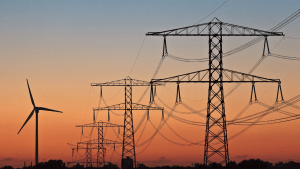
Real-time data streams and predictive analytics capabilities improve decision-making for utilities and energy companies, helping them fight disruptions.
The horror of Texas’s recent winter crisis highlights one critical lesson: our infrastructure must change. Outdated systems chock full of manual processes, clunky decision making, and unwieldy maintenance won’t support the population numbers or our environment’s changes. Lucky for us, real-time data could be the catalyst for the utilities and energy grid’s new era.
We’re shifting our energy demands to larger cities thanks to urban development and the move away from small, rural townships. Our priorities are also evolving because of new energy sources and increasing pressure to slow the reliance on fossil fuels. Even the shift in car manufacturing, with more vehicles plugging in instead of filling up, causes infrastructure stresses we didn’t experience before. The world is changing, and energy must adapt.
Texas is only one example of the stress we place on our energy and utility grid. To prevent the kind of disaster we saw there and in other natural disasters of the past, it’s time to leverage the power of data to do what humans can’t — predict the future based on subtle patterns evidenced in the massive amount of data we now collect from sensors to devices.
See also: Quantum Computing Will Help Keep the Lights On
The power of real-time data streams for utilities
Predictive analytics is largely untapped in the utilities and energy sector, but not for long. Energy is no longer linear, employing a complex spiderweb of systems, everything from intelligent distribution grids to smart meters in homes.
Some organizations are using sensor data embedded in transformers, allowing them to monitor and employ predictive maintenance. Others are analyzing data from customer behavior and smart meter usage to predict which ones are likely to fall behind on paying.
For data to build a cushion and prevent events like Texas from ever surprising us again, we’ll need a much larger investment into real-time infrastructure. The industry agrees and is beginning to make innovative shifts towards grid modernization using IoT, analytics at the edge, and cybersecurity improvements.
These real-time data streams and predictive analytics capabilities improve decision making so that companies can:
- improve overall operations, even across large distances
- reduce downtime, especially for required maintenance
- allow for growth in infrastructure based on population patterns
- better account for disruptive natural events and respond accordingly
- launch infrastructure solutions that unify real-time voltage and frequency control with network-wide energy management.
These and other vital initiatives, which will allow energy and utilities to evolve to meer environmental issues and population growth, are changing the energy and utilities landscape. As they embrace the potential of data infrastructures that support real-time insight and real-time decision making, they’ll protect customers and infrastructure from future disasters and deliver greater value.






























